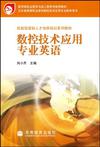数控技术应用专业英语
出版时间:2005-7 出版社:高等教育出版社 作者:刘小芹 页数:173
前言
本书所选素材均来自国内外数控技术工程资料和相关教材,紧密结合数控技术应用知识和技能,按专业内容循序渐进,删繁就简,目的是让学生在较短时间内积累一定数量的专业词汇,熟悉专业文章、工程资料和操作手册的英文表达,培养阅读和应用数控技术原文资料的能力。本书既反映了数控技术的常规专业知识,又介绍了数控新技术及其发展趋势,可作为各类职业技术学院(校)数控技术应用专业及现代制造技术专业的专业英语教学用书,也可作为从事数控技术、模具设计与制造技术、机电一体化技术等方面技术工作的工程技术人员自学或参考用书。 全书分6个单元,共24课,参考学时数为60学时。每课包括课文、专业词汇表、注解和练习。学习重点放在阅读理解、专业词汇积累和书面翻译上。同时,根据语言学习的特点,兼顾专业听、说能力的培养和提高,以加强对课文内容的理解和记忆,并为对外业务交流打下一定的基础。为巩固和拓宽学习内容,每单元都附有阅读材料,可让学生课外阅读、翻译,也可作为测试选题。为了便于学生自学,所有课文都附有参考译文,同时还配有由来自英语国家的外籍教师录制的录音带,供学生练习口语和正音。 本书由刘小芹任主编,薛恩任副主编,王珏、谢德荣、徐建春、肖龙、游煌煌等参编,由Mr.Bruce Skewes、王军担任主审。 在本书的编写过程中,我们曾得到了宁顺清、李望云、应文豹、詹华西、张幼华、卢锋等老师及学生的帮助,在这里一并表示感谢! 作为教育部职业教育与成人教育司推荐教材,教育部聘请华中科技大学机械学院国家数控工程中心陈吉红和北京理工大学李鹏飞审阅了本书。两位审者以严谨的科学态度和高度负责的精神认真审阅了书稿,提出了很多宝贵意见,在此表示衷心的感谢。 由于编者水平有限,加上时间仓促,书中难免有疏忽和错误之处,敬请读者批评指正。
内容概要
《数控技术应用专业英语》一方面向读者介绍了大量数控技术方面的英语专业词汇及其用法,另一方面全面系统地介绍了国内外数控技术的最新成果与实践。主要包括数控技术的起源与发展、数控原理及系统、数控机床结构及工艺、数控编程与加工、数控机床电气控制及其与现代制造工艺的关系等方面的内容。全书共有6个单元,每单元有4篇课文。同时,每单元附有与课文内容相关的阅读材料。《数控技术应用专业英语》还附有专业词汇表、常用专业技术缩略词汇表及参考译文。 《数控技术应用专业英语》可作为五年制职业院校数控技术应用以及机械工程类专业的英语教学用书,也可作为相关:仁程技术人员的英汉对照参考用书。
书籍目录
Unit One Fundamentals of Mechanical EngineeringText 1 Engineering DraftingText 2 Engineering MaterialsText 3 LatheText 4 Introduction to Metal-cuttingReading Material1-1 Cast Iron1-2 Metal Cutting Tools1-3 The Function of ToolsUnit Two Basic Concepts of Numerical ControlText 5 Historical Development of NCText 6 NC Machining Principle and NC SystemText 7 CNC PrincipleText 8 Cutting Tool CompensationReading Material2-1 Classifications of NC Machines2-2 Computer-assisted NC Programming2-3 Benefits and Gains from NCUnit Three Basic NC ProgrammingText 9 Manual and Automatic ProgrammingText 10 Basic Programming CommandsText 11 Case Study of Turning Machining ProgrammingText 12 Case Study of Milling Machining ProgrammingReading Material3-1 Three-jaw Chucks3-2 Steps to CAM System Programming3-3 Warnings and Cautions Related to Programming3-4 Manual Machine OperationUnit Four NC Machine ToolsText 13 Introduction to CNC Machining CenterText 14 Coordinate System of Machining CenterText 15 Automatic Tool Changer of Machining CenterText 16 EDM MachineReading Material4-1 Historical Development of CNC4-2 Automatic Tool Changer Types4-3 Local Coordinate SystemUnit Five NC Machines Operation and MaintenanceText 17 Control Panel Operation of NC Milling MachineText 18 MDI Operation of NC LatheText 19 Daily Maintenance of the 3-Dementional Measuring Machine ~Text 20 NC Machine Installation and AdjustmentReading Material5-1 Warnings Related to Daily Maintenance5-2 Special Coolant Systems5-3 Return to the Machine Referenced PointUnit Six Advanced Manufacturing TechnologiesText 21 MechatronicsText 22 Intelligent RobotText 23 Computer Integrated Manufacturing System(CIMS)Text 24 Introduction to Rapid PrototypingReading Material6-l Rationale for Flexible Manufacturing6-2 Computer-aided Manufacturing Systems6-3 Tool-life Management Systems参考译文第一单元 机械工程基础第1课 工程制图第2课 工程材料第3课 车床第4课 金属切削工艺简介第二单元 数控的基本概念第5课 数控的发展史第6课 数控加工原理及数控系统第7课 计算机数控原理第8课 刀具补偿第三单元 数控编程基础第9课 数控编程简介第10课 基本编程指令第11课 车削加工编程案例分析第12课 铣削加工编程案例分析第四单元 数控设备第13课 计算机数控加工中心简介第14课 加工中心的坐标系第15课 加工中心的自动换刀系统第16课 电火花加工第五单元 数控设备的操作与维护第17课 数控铣床控制面板的操作第18课 数控车床的手动数据输入操作第19课 三维测量仪的日常维护第20课 数控设备的安装与调试第六单元 先进制造技术第21课 机电一体化第22课 智能机器人第23课 计算机集成制造系统第24课 快速原型技术简介Appendix Ⅰvocabulary词汇表Appendix ⅡG Code and M Code for FANUC NC Milling MachineAppendix ⅢAbbreviations 缩略语词汇表参考文献
章节摘录
Engineering drafting is a very important means, which is used for engineering designs and engineering communications. We will introduce some key engineering drawing views as following : 1. Normal views A normal view is a perpendicular projection onto a viewing plane parallel to the line. In the normal view, all points of the line are equidistant from the observer. There-fore, the true length of a line is viewed and can be measured. And the true size and shape of any figure in the plane can be determined. 2. Principal(orthographic) views In a principal view( also known as a planar view) , one of the sets of projections is normal to the view. That is, one of the planes of the object is seen in a normal view. The "other two sets of projections are orthogonal and are usually oriented horizontally and vertically on the paper. Because background details of an object may not be visible in a principal view, it is necessary to have at least three principal views to completely illustrate a symmetrical object. At most, six principal views will be needed to illustrate complex objects. The relative positions of the six views have been standardized and are showed in Fig. 1-1, which also defines the width ( also known as depth), height and length of the object. The views that are not needed to illustrate features or provide dimension can be omitted. The usual combination selected consists of the top, front, and left side views.
编辑推荐
《数控技术应用专业英语》紧密结合数控技术应用知识和技能,按专业内容循序渐进,让学生在较短时间内积累一定数量的专业词汇。该书既反映了数控技术的常规专业知识,又介绍了数控新技术及基发展趋势。全书分6个单元24课,每课包括课文、专业词汇表、注解和练习,其重点入在阅读理解、专业词汇积累和书面翻译上,同时还兼顾专业听说能力的培养和提高,以加强对课文内容的理解和记忆。该书是教育部职业教育与成人教育司推荐教材。
图书封面
评论、评分、阅读与下载
